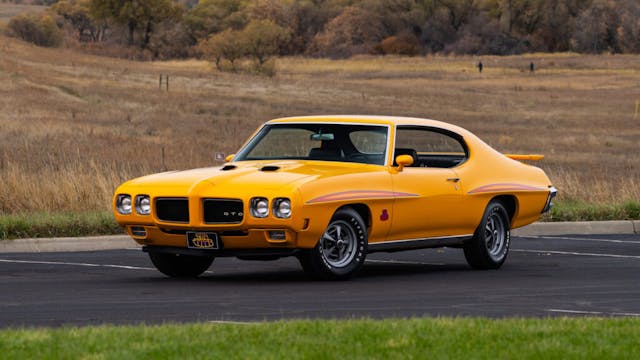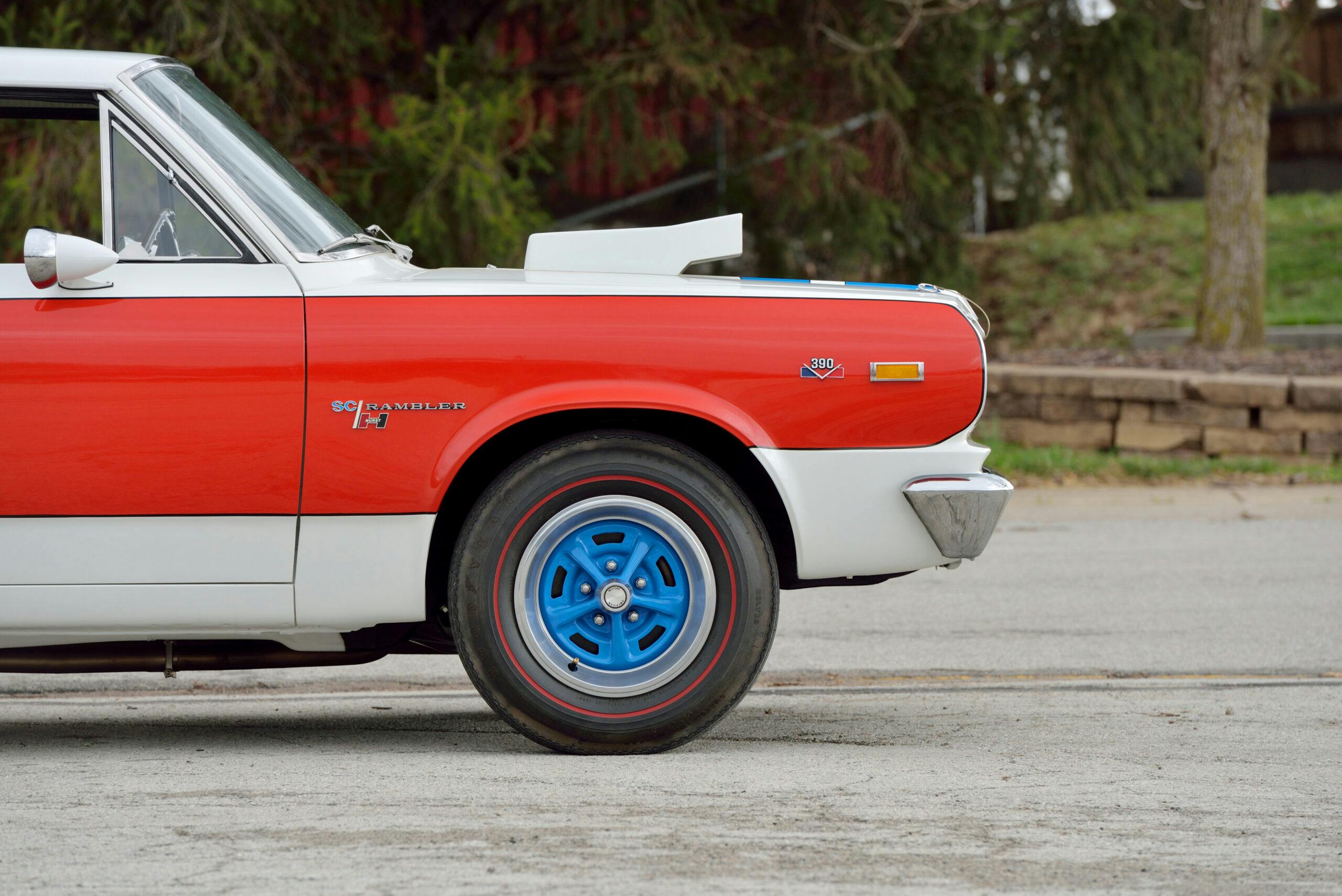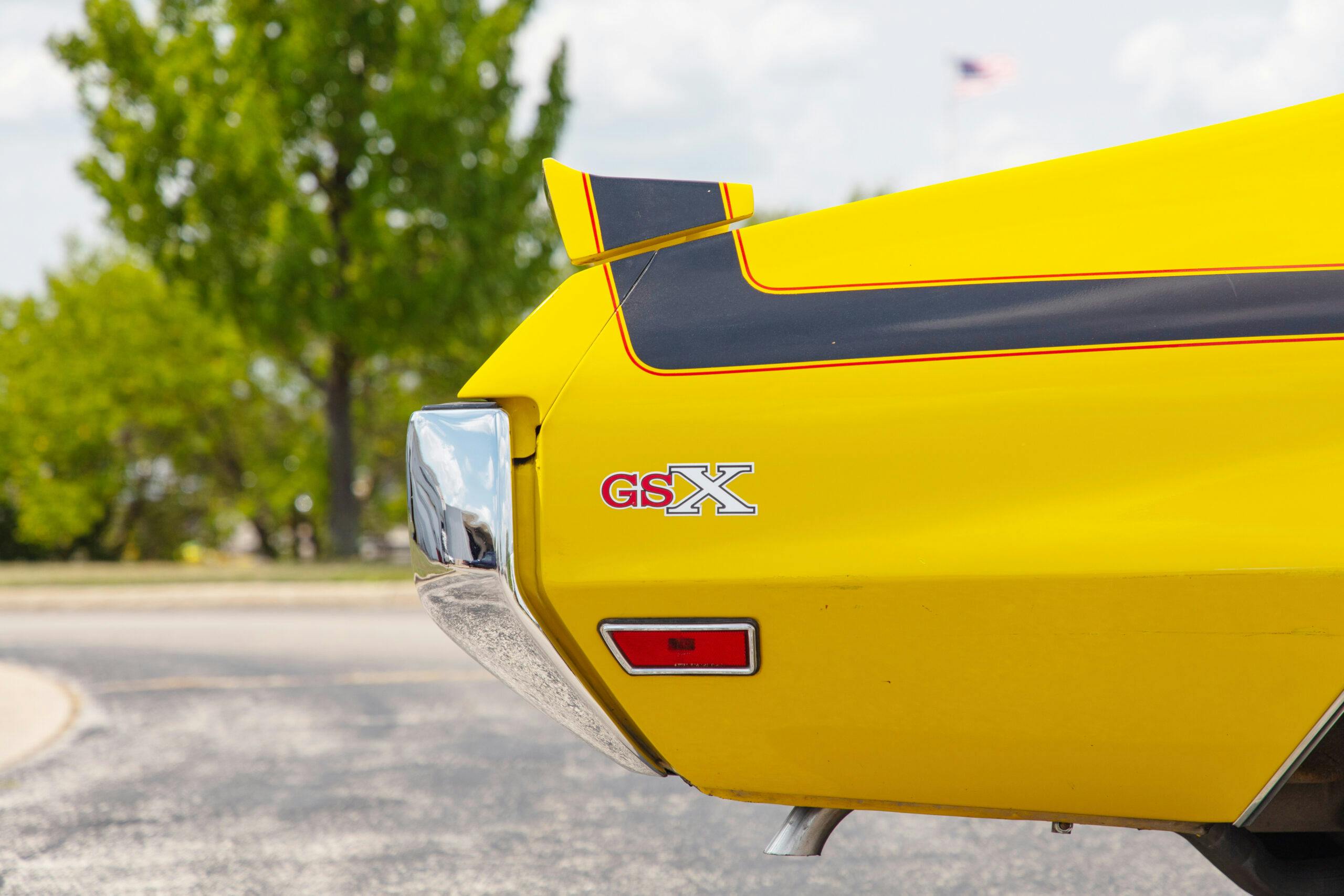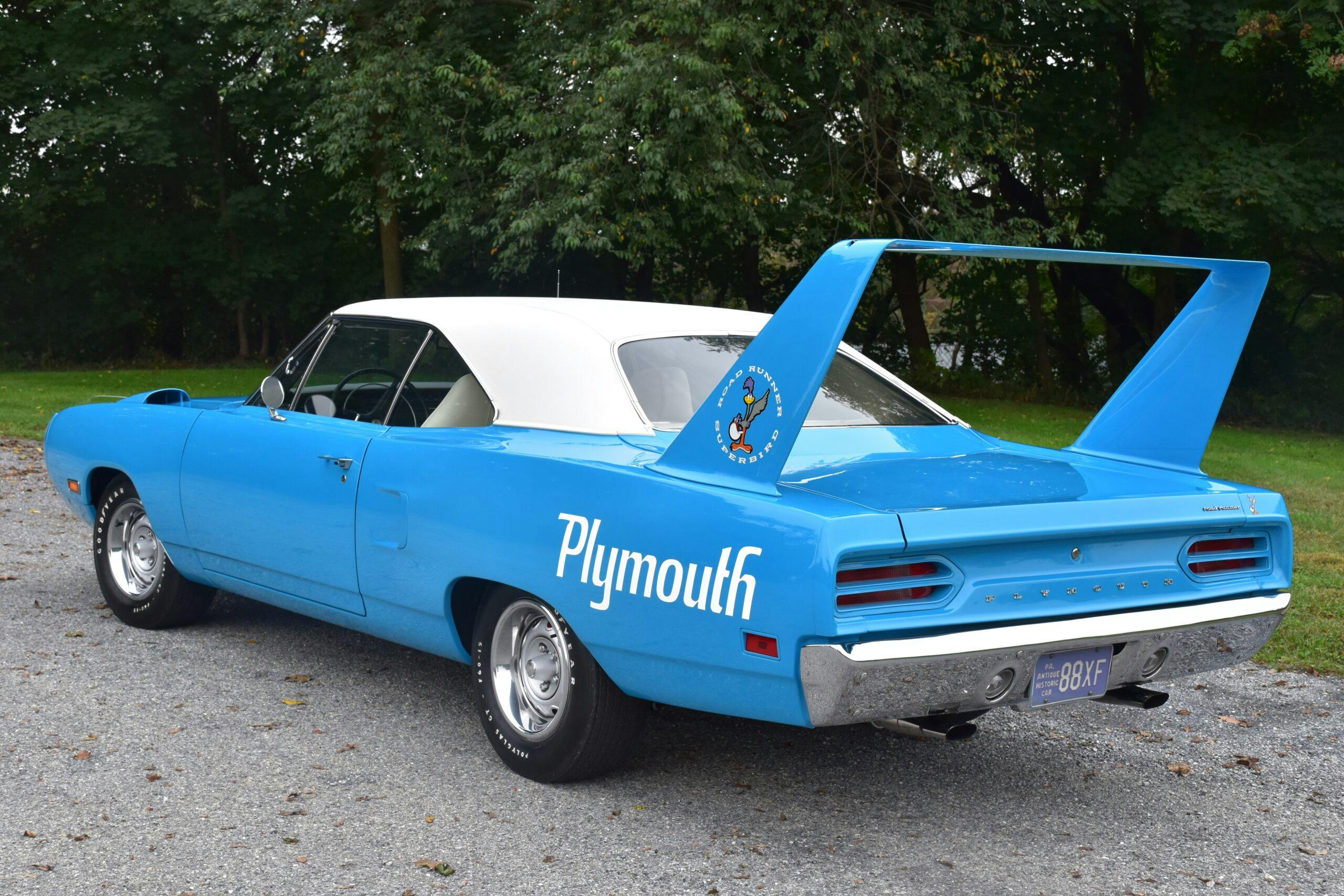High-impact colors: When hot muscle cars got some crazy paint
In the late 1960s and early 1970s, American automakers began offering suitably psychedelic and wild exterior paint colors for their muscle cars—a perfect match for the era.
Commonly referred to as “high-impact colors,” these shades appeared in the spring of 1969, when Chrysler’s Dodge and Plymouth divisions introduced one of the first and rarest high-impact colors. For Dodge it was known as Bright Green and for Plymouth it was Rallye Green; each division had its own name for the same color. Additional colors were orange—Go Mango for Dodge and Vitamin C for Plymouth—and a yellow that Dodge called Butterscotch and that Plymouth named Bahama Yellow.
Chrysler’s color palette expanded for the period from 1970 to 1971. One of the most desirable hues was a purple known as Plum Crazy for the Dodge products and In-Violet for Plymouth. Other color names included Lemon Twist/Top Banana, Tor-Red/Hemi Orange, Moulin Rouge/Panther Pink, and Sassy Grass/Green Go, to name a few. These high-impact colors lasted until 1974.

Not to be left behind, other Detroit automakers got in on the trend. From 1969 to 1970, American Motors offered Big Bad Blue and Big Bad Green; its most popular color was Big Bad Orange. At General Motors, in 1969, Pontiac introduced Carousel Red, which was a popular color for the GTO Judge. In 1970, Pontiac also offered Orbit Orange, again exclusive for the GTO Judge model; Chevrolet called the color Hugger Orange. The Buick division had Saturn Yellow and, for one year, a conservative Apollo White color for its GSX model. Oldsmobile had a special 1970 Cutlass Rallye 350 model in a vibrant Sebring Yellow hue with color-keyed yellow bumpers. Last but not least, Ford had its bright Grabber Blue, Grabber Orange, Grabber Green, and Grabber Yellow in 1971.
In 1969, the AMC Hurst SC/Rambler was a special model with a red, white, and blue patriotic paint scheme. An option for a toned-down paint job was available as well. The SC/Rambler featured a conservatively rated 315-hp, 390-cubic-inch V-8 (AMC’s largest engine in 1969) and a Hurst four-speed manual shifter. The following year, AMC featured a special 390-cubic-inch, 340-hp V-8 engine in the Rebel Machine. It had a special red, white, and blue stripe on a white body and an option to paint it in any AMC color that was offered in the Rebel.
The high-impact colors added more excitement and flash to the muscle car era; combined with a dual-exhaust rumble and neck-snapping acceleration, the paints made these cars truly stand out among other vehicles of the period.
High-Impact Colors is one of 20 classes to be featured at the 2023 Greenwich Concours d’Elegance, on June 2-4, 2023. Download the 2023 Greenwich Concours d’Elegance event program to learn more about Sunday’s other featured classes, Saturday’s Concours de Sport, our judges, sponsors, non-profit partners, 2022 winners and more!
***
Check out the Hagerty Media homepage so you don’t miss a single story, or better yet, bookmark it. To get our best stories delivered right to your inbox, subscribe to our newsletters.







I wasn’t really a fan of the outlandish colors of muscle cars during this era – hard to have a “sleeper” at a Friday night stoplight when your car singed the eyeballs of everyone for three blocks! 😄
and singed the eyeballs of every motorcycle cop within eye distance!
What’s tried & dated will be cla$$ic & authenti
I’m a huge fan of the purple & green cars, surprised u didn’t mention mopars sublime/limelight, my favorite but either loved or hated by most.
Problem wasn’t singing eyeballs….problem was it stood out in traffic & could be seen for miles, especially by cops. Who couldn’t resist pulling them over, sometimes just speeding no more than others on the highway at same time..or partly cause they wanted to check em out up close.👨✈️👍
Carousel Red = Hugger Orange; Orbit Orange is very different, being much yellower as the photo shows.
Mopar’s “Curious Yellow” is my favorite of the eyeball-searing colors, followed by the brighter oranges.
Ordered my ’73 Z28 in code 97 orange by looking at the dealer’s lot to see which color jumped out at me – hey, I was 21 years old…
And Hugger Orange was also called Monaco Orange on Chevelles as a special order color on 69.
Today we’d call these “Hey, look at me!” colors. As mentioned, they often attracted the wrong kind of attention. In 1970 I was very happy to drive a fast car in a neutral color that blended in with traffic and was pretty much ignored by police.
WERE YOU THE DUDE DRIVING THAT BEIGE LAMBORGHINI?
For me, Orange gets it done. I have a 2004 Mustang Mach 1 in Competition Orange and a 2011 Ford Raptor in Molten orange. The 1970 Boss 302 in Calypso Coral was another nice color, as were the Plymouth Superbirds in Hemi Orange. The greens would be my second choice.
Well done Billy.
I can’t agree more.
I loved all the muscle car hot colors from the late 60’s to early ’70’s. I do think Dodge and Plymouth had the absolute best colors though. I can barely stand all the current cars that seem to all be white, black, gray, or silver. I want some color in my cars. My 2017 Camaro SS is Red Hot.
Left off the BigBad AM colors.
Left off the BigBad AMC colors.
Ummm – “Not to be left behind, other Detroit automakers got in on the trend. From 1969 to 1970, American Motors offered Big Bad Blue and Big Bad Green; its most popular color was Big Bad Orange.”
That kinda seems not left off to me!
Way back in the early sixties, my “crue” and I were going to repaint a ’59 Cadillac because we thought it should be pink. We poured over the color chip books, and found a DuPont color we all agreed on. The name of the color? Pussy Pink. I can’t help but wonder if the marketing genius that came up with that was sumarily punished.
My classic car is madza soul red which is a close to candy apple red.
The paint schemes of the late 60s and early 70s imo are truly a breath of fresh air. There are some truly gorgeous new model cars out there that could benefit if the manufacturers offered a broader range of color choices.
Leasing was the eventual death knell for unusual and fun colors being more prominent.
Resale value precluded the risk of producing colors that could be polarizing or detrimental to minimal depreciation. Sad really, cars for the most part are appliances now.
I love these brightly colored muscle cars even if I likely would do a more “ordinary” color.
My thanks to Dodge for “Lighting up the sixties” with all those Bold Color schemes. Not many liked them, until they passed them by, and bought into how to “Paint” a car. They were responsible for all the subsequent business realized by Body Shops and Custom Shops. Hats off to Dodge.
The standout in 2021 is the ford gt mustang in “twister orange” with dark olive green striping.
At least the manufactures back in the late 60’s and early 70’s would take a chance with some wild colors.
Not like today with most of them offering gray, white or some other boring color. Dodge excluded, they still take a chance …
I don’t know about that Kevin, there is some pretty wicked colours out there these days when you look at the options available. Problem is the manufacturers don’t offer near as many colour choices as they use to, and most people do choose the bland whites, silvers and greys. Just got my 2023 Bronco with Eruption Green – stunning colour! (If you like green!) And you are correct – Dodge has nailed it in that regard.
What I do not see in this modern age however, is the pastels and massive varying range of lighter toned colours that were offered years ago. Another point, everything is contrasted with black these days, which IMO really tomes down whatever colour is applied, as compared to chrome or white – again, think classic Bronco which all came with white grilles and tops.
But, to that point, who would want to drive a FWD biased CUV with 4 doors that was painted Playboy or Panther Pink? Hahah.